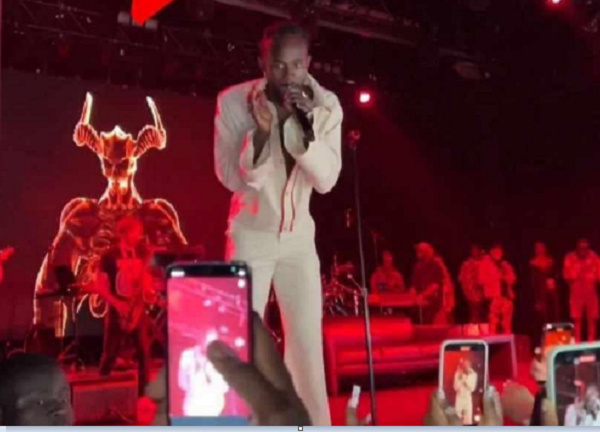Why ‘Borborbor’ is labelled the ‘indigenous twerk dance’

A little bit of hip sways and waist gyrations and the involuntary movement of the butt here and there.
That’s a depiction of the ‘Borborbor’ dance that embodies a unique blend of rhythm and motion.
Obviously not a dance for people with ‘waist problems’ or stiff hips, particularly because mastering the Borborbor requires strong flexible waists, stamina, and thick gluteal muscles.
In essence, those who do a great job at performing ‘Borborbor’ can effortlessly transition into the realm of twerking.
Originating from the Ewe communities of Ghana’s central and northern Volta Region, the Borborbor dance has garnered comparisons to the modern-day twerk dance.
Formerly referred to as ‘Akpese,’ this cultural expression was initially confined to the ‘Ewedome’ belt, encompassing locales such as Kpando, Hohoe, and Ho, before spreading across Ewe-speaking communities in Togo and Benin.
Why is it termed as the indigenous twerk dance?
Like the twerk dance, ‘Borborbor’ entails a rhythmic bending and straightening of the legs, accentuating the popping of the buttocks with each movement.
While synchronizing knee bends with the music and swaying the hips, the ‘booty’ wiggles effortlessly.
Much like twerking, the focus remains primarily on the lower body, with minimal upper body involvement, facilitating the integration of sexually suggestive gestures.
However, the overtly sensual nature of ‘Borborbor’ sometimes clashes with its traditional contexts, particularly because it is often performed to gospel tunes, even within church settings.
A chief’s stance against the ‘twerk-like’ ‘Borborbor dance
Performing sexually suggestive moves at formal events contradicts the dance’s intended purpose, thereby leading to instances of disapproval, as evidenced by the intervention of a chief during a ‘Borborbor’ performance.
During a durbar at Anfoega Akukome sometime in 2022, the Paramount Chief of Anfoega Traditional Area, Togbe Tepreh Hodo IV, intervened and halted what he deemed a profane ‘Borborbor’ performance.
His public reprimand underscored the community’s rejection of dances veering towards indecency, garnering widespread support and applause from attendees.
Beyond the controversy, there are some health benefits of the ‘Borborbor’ dance
Despite occasional controversies, Borborbor serves as a conduit for cultural celebration and physical well-being.
Engaging in this lively dance offers a plethora of health benefits:
1) Weight loss: The Borborbor dance can be an effective way to burn calories and lose weight. By engaging in regular physical activities, such as dancing, you can help maintain a healthy weight and prevent obesity.
2) Cardiovascular exercise: The ‘Borborbor’ dance is a high-energy activity that can provide a good cardiovascular workout. This can help to improve heart health and reduce the risks of heart disease.
3) Stress relief: Dancing can be a fun and enjoyable way to relieve stress and improve mental health. The ‘Borborbor’ dance, in particular, may be especially beneficial for stress relief due to its energetic and joyful nature.
4) Improved balance and coordination: The ‘Borborbor’ dance requires coordination and balance in order to execute the various movements. As such, it can help to improve balance and coordination of the body over time.
5) Socialization: The ‘Borborbor’ dance is often performed in groups, which can provide an opportunity for socialization and connection with others. This can be beneficial for mental well-being and overall happiness.
The ‘Borborbor’ sound and its origins
Accompanied by rhythmic drumming, vocal harmonies, and trumpet melodies, Borborbor finds its roots from the village of Wusuta, a community along the Volta Lake, during the 1940s.
Francis Nuatro, an esteemed ex-police officer from Kpando, is credited as the progenitor of Borborbor, blending the traditional ‘Konkoma’ rhythms with various musical genres to craft its distinctive sound.
Nuatro’s innovation birthed a musical legacy characterized by the use of castanets, rattles, and drums, evolving to incorporate elements of rhymes and highlife.
Today, Borborbor performances grace a myriad of occasions, including funerals, festivals, weddings, and church ceremonies, uniting communities in celebration of their cultural heritage.
Research tools: Edem Tiego, Dovemed.com
Source: www.ghanaweb.com





